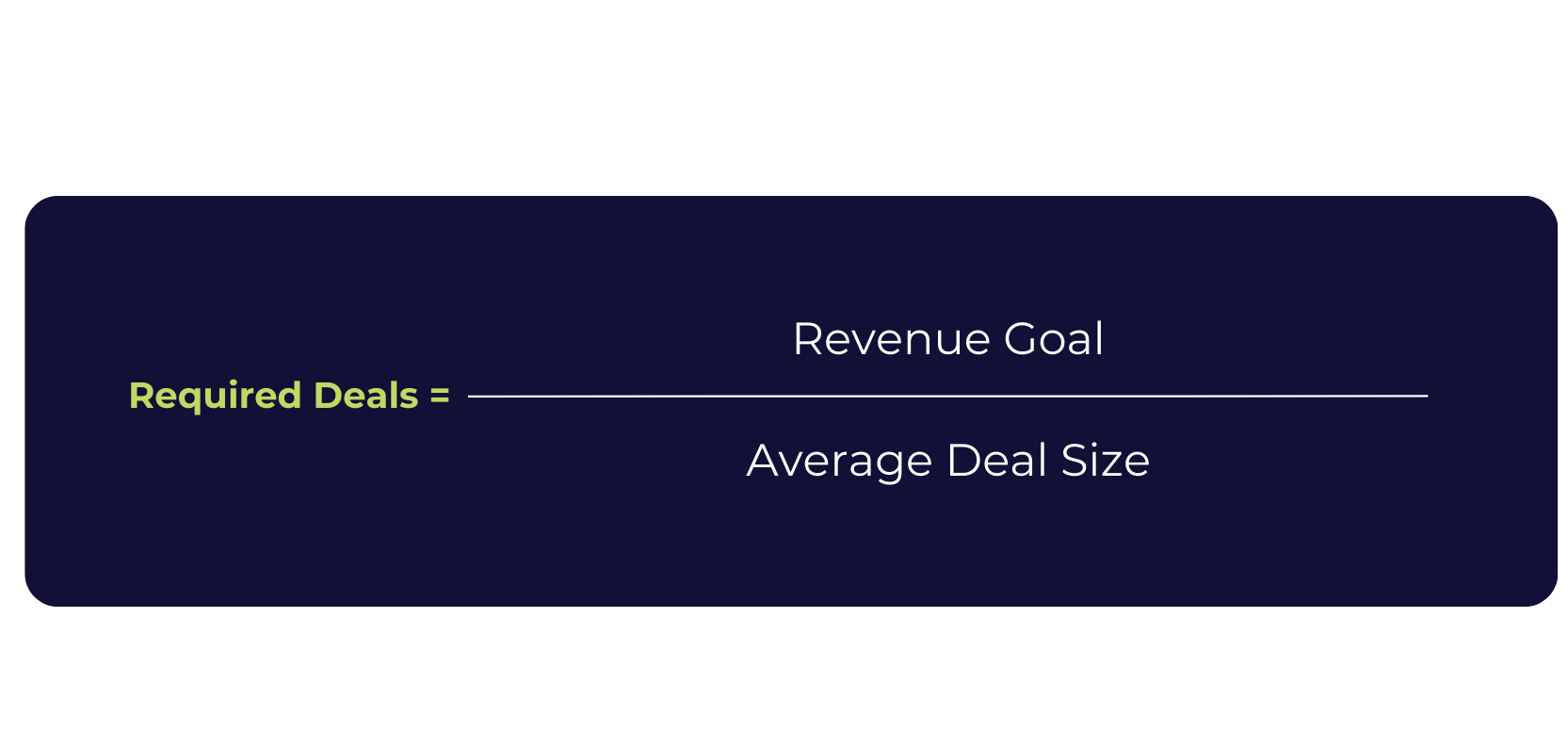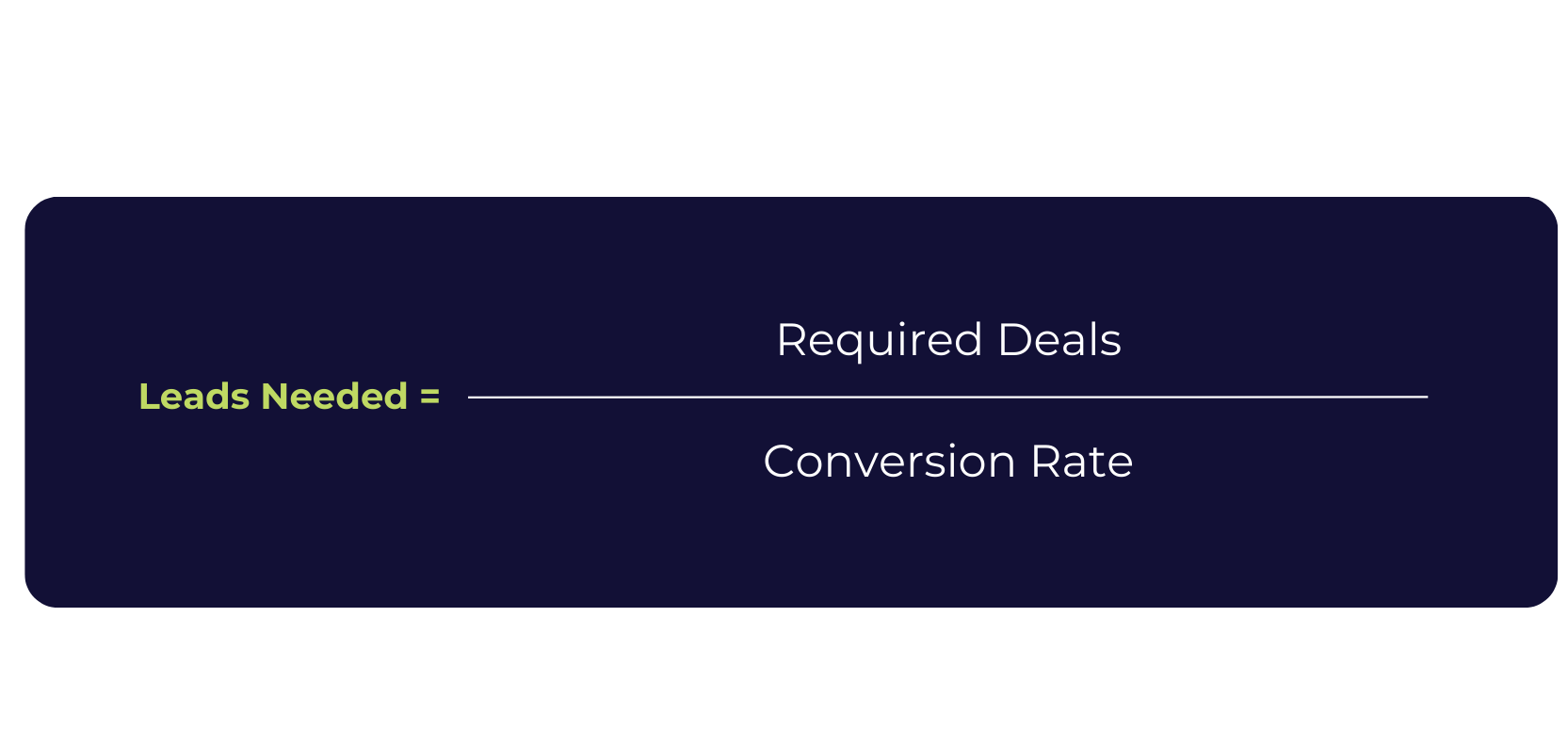
Reverse-Engineering in Business: How to Calculate Lead Goals
Reverse-Engineering in Business: How to Calculate Lead Goals
Danny Shepherd, CO-CEO • Intero Digital • October 26, 2023
Every marketer knows the pressure of hitting revenue targets. Whether you’re looking to solidify your approach or are just starting out, understanding how many leads you need to generate to meet your goals is a fundamental part of any lead generation strategy.
But how can you precisely determine that number?
This guide breaks down the concept of reverse-engineering in business into manageable, data-driven steps, equipping you to pinpoint the exact volume of leads you should be targeting.
Achieving Revenue Goals: The Power of Reverse-Engineering
At the core of lead generation marketing lies a critical question: How many leads turn into sales? The path to achieving revenue goals in digital marketing is not always a straight line. Sometimes, it requires a backward approach — starting from the destination and tracing steps back to the beginning.
Understanding how to reverse-engineer your goals positions you to not only clarify your targets but also define the exact number of leads needed to achieve them. No more guesswork. Instead, you will know exactly how to calculate lead conversion rate, estimate how many leads should marketing generate, and align your efforts with larger business objectives.
• Goal clarity and alignment: No more vague goals. Every action in marketing and sales will now have a purpose, driving the entire team in a unified direction.
• Data-informed strategy: Decisions are rooted in actual metrics, eliminating guesswork and ensuring your strategies are both accurate and effective.
• Optimized conversion rates: When you grasp how to calculate lead conversion rate, you fine-tune each stage of your sales funnel. This proactive approach ensures higher efficiency in transforming leads into customers.
• Collaboration and communication: Sales and marketing, often siloed, can now collaborate with a shared vision, refining conversion rates and working toward common revenue goals.
Big picture? Reverse-engineering your digital marketing strategy improves efficiency at every layer. Understanding how to calculate cost per lead, how many leads turn into sales and, ultimately, how to project sales growth are key skills in developing data-driven, effective strategies for lead generation.
With a clearer perspective on the value of reverse engineering in business, let’s break down the steps to put it into action.
Steps to Calculate Lead Numbers
Our approach simplifies reverse-engineering with one comprehensive formula:

Here is a step-by-step guide to put this formula into practice:
1. Set clear revenue goals.
Use past performance and growth targets to determine a realistic number to define your goals for a specific period of time — monthly, quarterly, or annually.
2. Calculate average deal size.
Determine the average value of sales. If you have a diverse product range, get the weighted average based on sales distribution.
3. Determine required revenue.
Divide your revenue goal by the average deal size to determine how many deals you need to close to achieve the desired revenue.

4. Calculate conversion rates.
Determine how many leads marketing should generate by understanding the progression of leads through the sales funnel:
• Lead-to-prospect conversion rate: Percentage of leads maturing into qualified prospects.
• Prospect-to-opportunity conversion rate: How many of these prospects turn into tangible sales opportunities?
• Opportunity-to-closed deal conversion rate: Finally, how many of these opportunities culminate in actual sales?

5. Buffer for funnel leakage.
Not all leads will progress through the funnel successfully. Some might drop off. So, ensure you have a buffer in your calculations to accommodate this.
6. Leverage historical data.
If you have historical data on your conversion rates and sales funnel performance, use it alongside industry benchmarks to refine your lead estimations.
7. Fine-tune with marketing channels.
Whether it’s social media or paid advertising, each marketing channel can yield different conversion rates. So factor in channel performance in your lead estimations.
8. Segment and target.
Segment your target audience based on demographics, behaviors, and preferences. Different groups might have unique conversion rates, which can impact the volume of leads needed.
How to Project Sales Growth When Reverse-Engineering the Marketing Funnel
While knowing how to calculate the numbers is beneficial, ensuring that these insights are leveraged to implement a successful strategy is the goal. The next step is to look at the larger picture: how to make this knowledge work for you consistently.
Fortunately, there are a few steps you can follow to make sure you’re accurately tracking how many leads turn into sales during the reverse-engineering process.
1. Monitor and analyze.
Track your lead generation and conversion rates consistently. This allows you to identify trends, patterns, and areas for improvement. Set up regular reporting and review sessions to keep a close eye on your progress.
2. Refine conversion rates.
Conversion rates can change over time due to various factors, including market shifts and changes in customer behavior. Regularly assess and update your conversion rate assumptions based on new data and insights.
3. Benchmark for success.
Compare your metrics against industry standards. This provides context for evaluating your performance and identifying areas where you might be lagging or excelling.
4. Never stop experimenting.
Continuously test different marketing strategies, messaging, and channels to find what resonates with your audience and refine your strategies accordingly.
5. Implement feedback loops.
Maintain open communication with your sales team to gather insights about the quality of leads, the effectiveness of lead nurturing, and the overall sales process. Their input can help you adjust your lead generation strategies accordingly.
6. Maintain adaptability.
Stay attuned to changes in your industry, market trends, and competitive landscape. Adapt your strategies to address emerging opportunities and challenges effectively.
7. Optimize tools and tech.
Periodically review your lead generation tools. New tools may offer enhanced capabilities that could improve your processes.
8. Educate and align.
Foster collaboration between sales and marketing. Shared insights and knowledge help both teams stay on the same page and make informed decisions.
9. Ensure proper documentation.
Standardize and document processes. This ensures everyone is on the same page, optimizing efficiency.
10. Train team members.
Keep your marketing team up-to-date with the latest trends, best practices, and strategies in lead generation. This ongoing education empowers them to make informed decisions and contribute to the process’s effectiveness.
The journey of every successful marketer is paved with clarity, strategy, and precise action. By effectively reverse-engineering your sales process, you not only anticipate your needs but can also implement proactive strategies that align seamlessly with your revenue goals. Digital marketing doesn’t have to feel like a gamble; with the right approach, every move you make can be data-informed and purpose-driven.
Take Control of Your Lead Generation Strategy Today
Ready to start optimizing your lead generation efforts? Download our detailed lead generation worksheet. With it, you’ll have a comprehensive tool at your fingertips, equipping you to know exactly how many leads you need to generate for business success.

